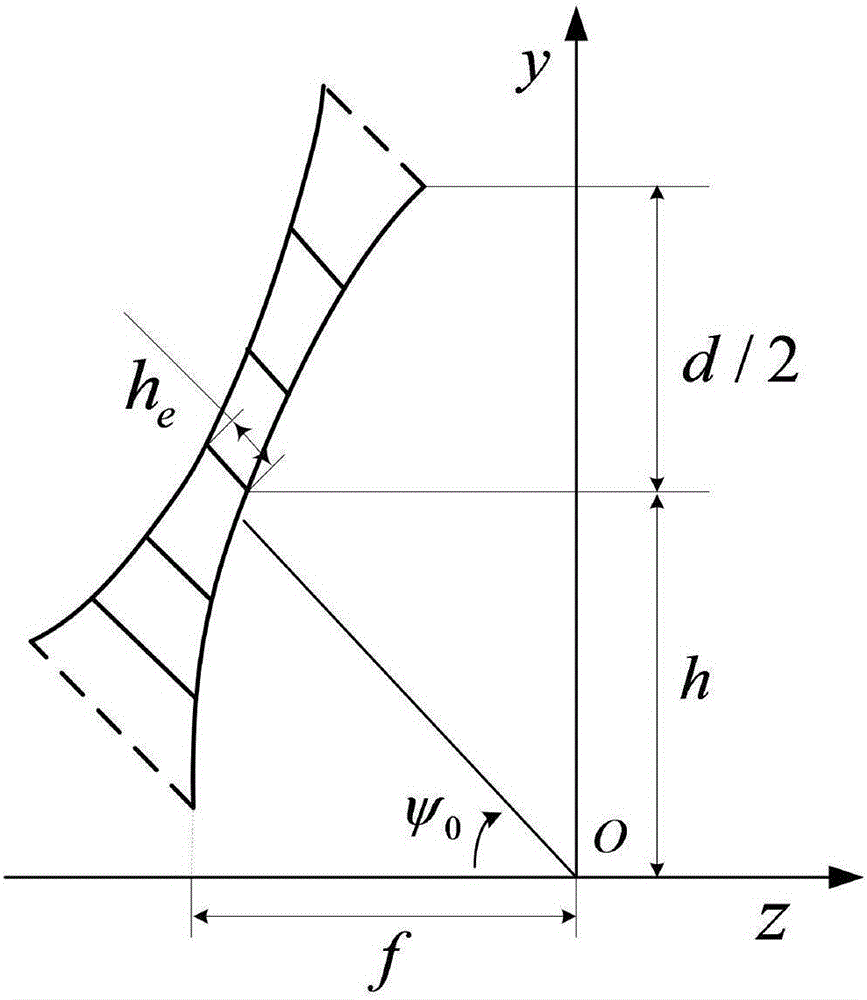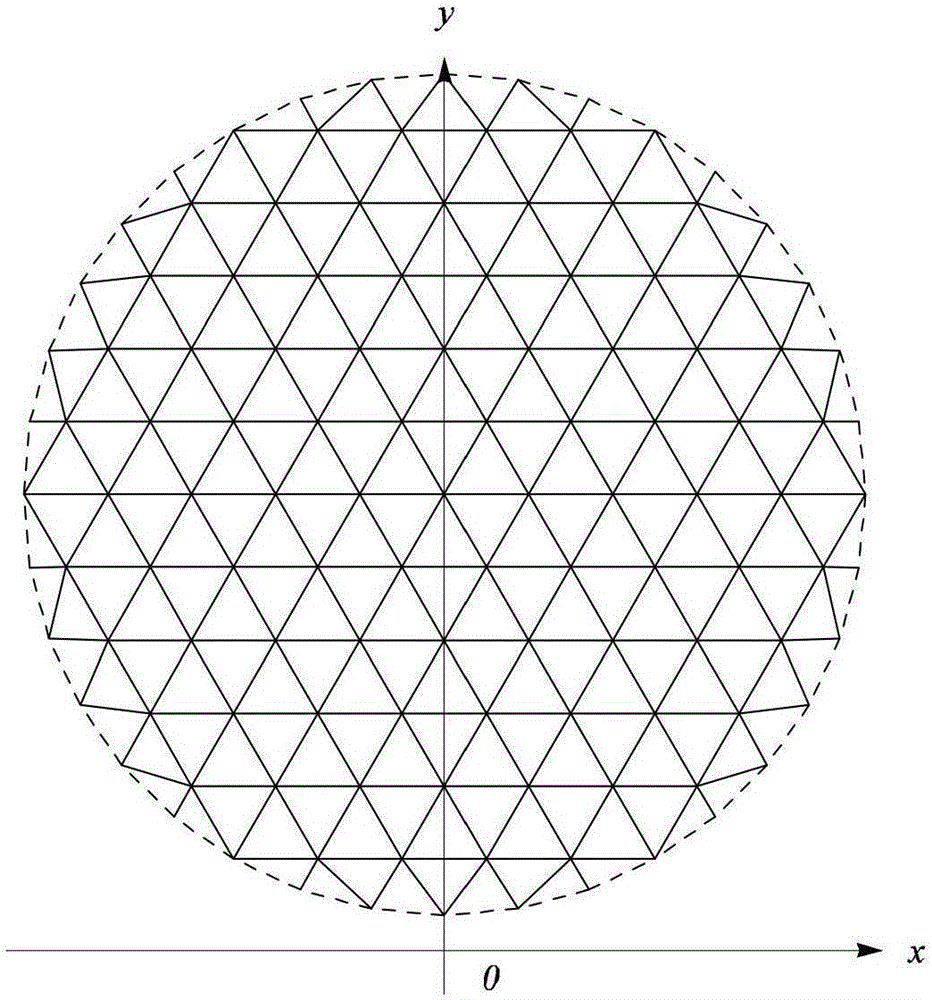Electromechanical coupling model-based space net-shaped antenna power load analysis method
An electromechanical coupling, dynamic load technology, applied in the reflection/re-radiation of radio waves, electrical digital data processing, radio wave measurement systems, etc. features, etc.
- Summary
- Abstract
- Description
- Claims
- Application Information
AI Technical Summary
Benefits of technology
Problems solved by technology
Method used
Image
Examples
Embodiment Construction
[0051] Attached below figure 1 , the specific embodiment of the present invention is described in further detail:
[0052] The invention provides a method for analyzing the dynamic load of a space mesh antenna based on an electromechanical coupling model, comprising the following steps:
[0053] Step 1. Input the geometric parameters, material parameters and electrical parameters of the spatial mesh antenna provided by the user; the geometric parameters include the aperture, focal length, offset distance, and the minimum distance between the front and rear mesh surfaces; the material parameters include the cable structure, truss structure and wire Material density, cross-sectional area, Young's modulus, and Poisson's ratio of the mesh structure; electrical parameters include operating wavelength, feed source parameters, feed source primary pattern, and electrical performance requirements, where electrical performance requirements include antenna gain, lobe Width, sidelobe lev...
PUM
 Login to View More
Login to View More Abstract
Description
Claims
Application Information
 Login to View More
Login to View More - R&D
- Intellectual Property
- Life Sciences
- Materials
- Tech Scout
- Unparalleled Data Quality
- Higher Quality Content
- 60% Fewer Hallucinations
Browse by: Latest US Patents, China's latest patents, Technical Efficacy Thesaurus, Application Domain, Technology Topic, Popular Technical Reports.
© 2025 PatSnap. All rights reserved.Legal|Privacy policy|Modern Slavery Act Transparency Statement|Sitemap|About US| Contact US: help@patsnap.com



